The 7 Most Common Causes of an Ant Infestation in Your House
An aunt infestation might involve endless cups of tea, accompanied by made-from-scratch confections, heartwarming family stories, and an overwhelming urge to pinch cheeks. On the other hand, an ant infestation tends to include tiny, six-legged visitors marching relentlessly in search of stray crumbs and sticky spills. While one leaves you with warm memories and a few extra pounds from all those homemade treats, the other leaves you reaching for the ant traps and wondering who dropped the cookie crumbs on the kitchen counter. It was Aunt Clara. It’s always Aunt Clara. Continue reading to discover the 7 most common causes of ant infestations in your house and how to avoid them.

©Doug McLean/Shutterstock.com
The 7 Most Common Causes of an Ant Infestation in Your House: The Likely Culprits

©Dhe Tong/Shutterstock.com
Ants (Formicidae), highly organized social insects, exhibit a remarkable array of behaviors and adaptations. From deserts to rainforests, these small but resilient creatures live in diverse ecosystems around the world. With over 12,000 species and populations numbering in the quadrillions, ants are ubiquitous, which means they are found everywhere. Except Antarctica. The very definition of irony. Ant colonies operate as cohesive units, with distinct roles for workers, soldiers, and a queen. They communicate through pheromones. They possess impressive foraging and food storage abilities. While ants play a vital role in our ecosystem, they can also become household pests. Several types of ants commonly infest homes. So, when these little pests invade your home, which species is it most likely to be?
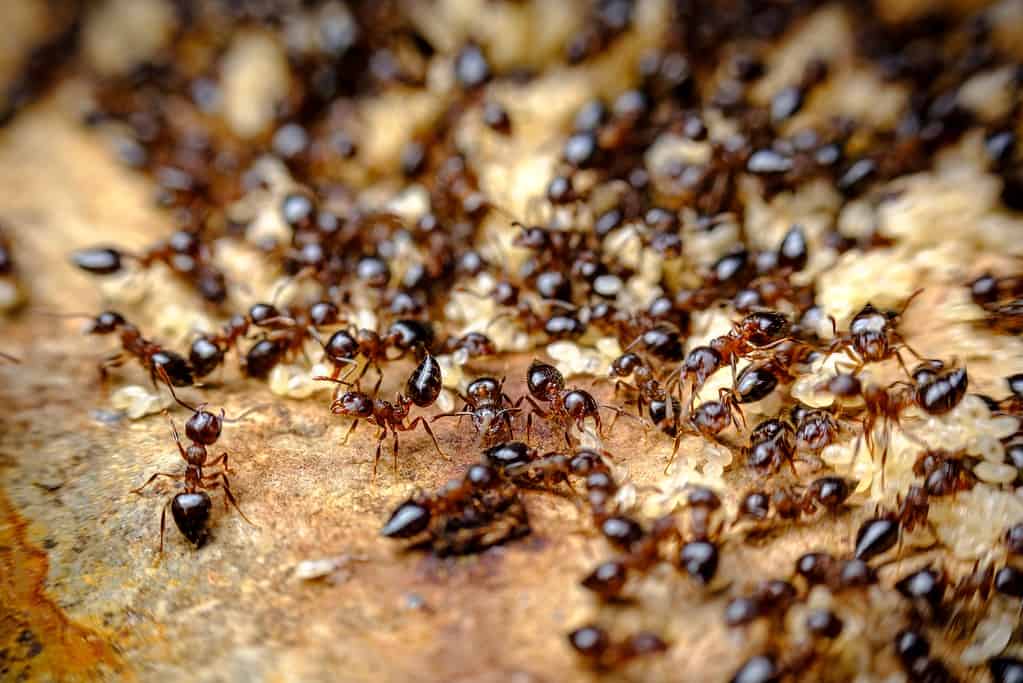
©Ezume Images/Shutterstock.com
Common House Ants
Some of the most common ant species that you may encounter in and around your house include:
- Odorous House Ants (Tapinoma sessile): These ants are small and brown-black in color. They get their name from the strong, unpleasant odor they emit when crushed. Odorous house ants typically nest indoors near moisture sources and food.
- Argentine Ants (Linepithema humile): These small, light to dark brown ants are known for forming large colonies. They often nest near moisture sources and can be found in walls, beneath floors, and in gardens.
- Carpenter Ants (Camponotus): Carpenter ants are larger ants, often black or red, and they are known for excavating wood to create their nests. While they don’t eat the wood like termites, they can cause structural damage to homes over time.
- Pavement Ants (Tetramorium caespitum): These small, dark ants are often found near pavement and sidewalks, but they can also infest homes. They tend to nest in cracks and crevices in and around buildings.
- Pharaoh Ants (Monomorium pharaonis): Pharaoh ants are tiny, light yellow to reddish-brown ants that are notorious for being difficult to control. They nest in warm, hidden areas and are known to infest hospitals and food storage areas.
- Thief Ants (Solenopsis molesta): Thief ants are very small, pale yellow to light brown ants. They are called thief ants because they often steal food from the nests of other ant species. They are known to infest homes and buildings.
- Acrobat Ants (Crematogaster): Acrobat ants get their name from their ability to lift their abdomen over their head when disturbed. They are typically brown or black and may infest homes, especially in rotting wood.
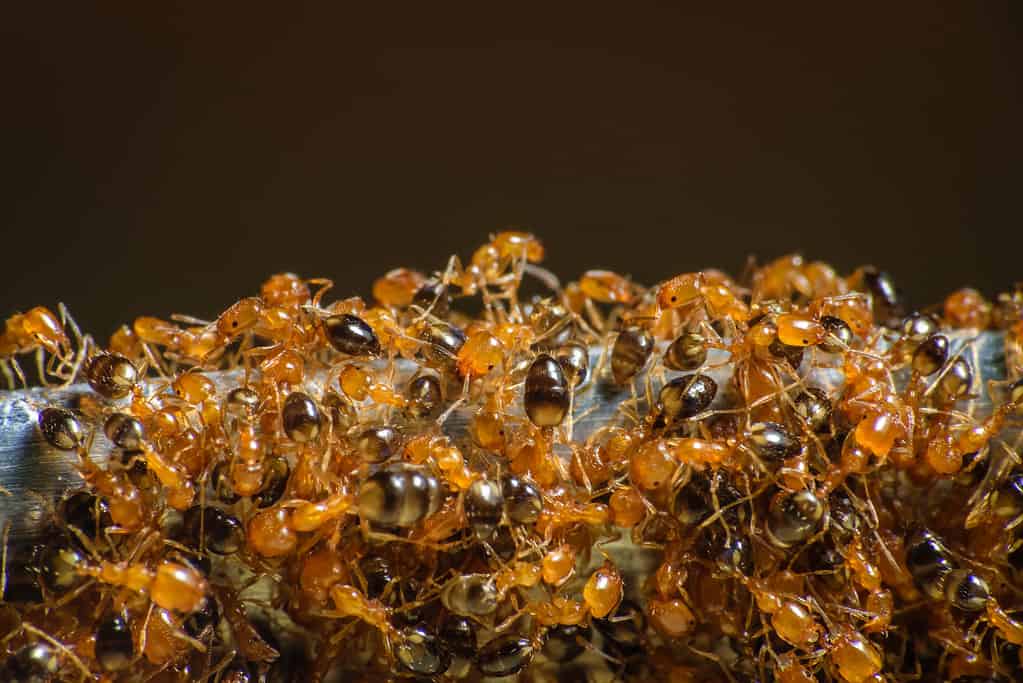
©Suman_Ghosh/Shutterstock.com
The 7 Most Common Causes of an Ant Infestation in Your House: Food
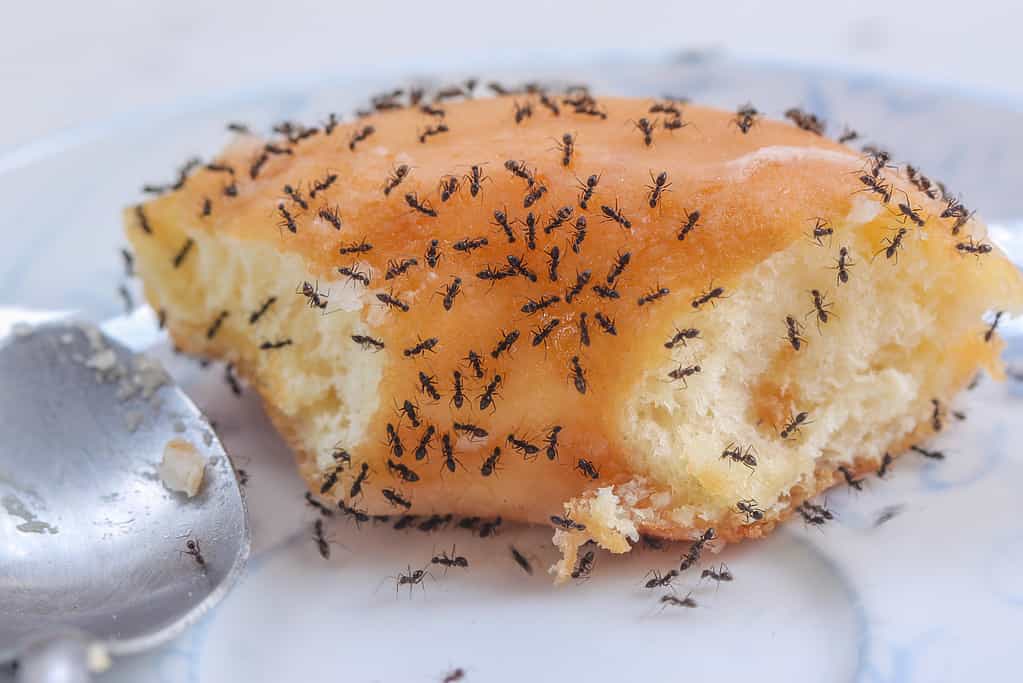
©DARUNEE SAKULSRI/Shutterstock.com
Ants are attracted to homes primarily by the availability of food, water, and suitable nesting sites. Understanding what attracts ants can help you take preventive measures to reduce infestations. Ants are scavengers, and they are primarily attracted to food. Common food sources that attract ants include crumbs, spilled liquids, sugary substances, greasy residue, and pet food. Ensuring that food items are properly stored in airtight containers, and cleaning up food spills promptly deters ants. Cleaning up sticky spills with a mixture containing vinegar will remove any telltale signs.
Ants send out scout ants in search of food. Scout ants are responsible for exploring their surroundings and locating potential sources of food. When a scout ant discovers a food source, it will return to the colony and leave a trail of pheromones to lead other worker ants to the food. This pheromone trail serves as a communication method to guide the colony members to the food source efficiently. Once the trail is established, worker ants will follow it to retrieve food and bring it back to the nest. This foraging behavior helps ants efficiently locate and exploit available food resources.
Once you discover the trail, you can eliminate the presence of the pheromones with a mixture of equal parts vinegar and water. In the absence of a trail, wiping down countertops, especially along walls, can help keep ants at bay.
The 7 Most Common Causes of an Ant Infestation in Your House: Water
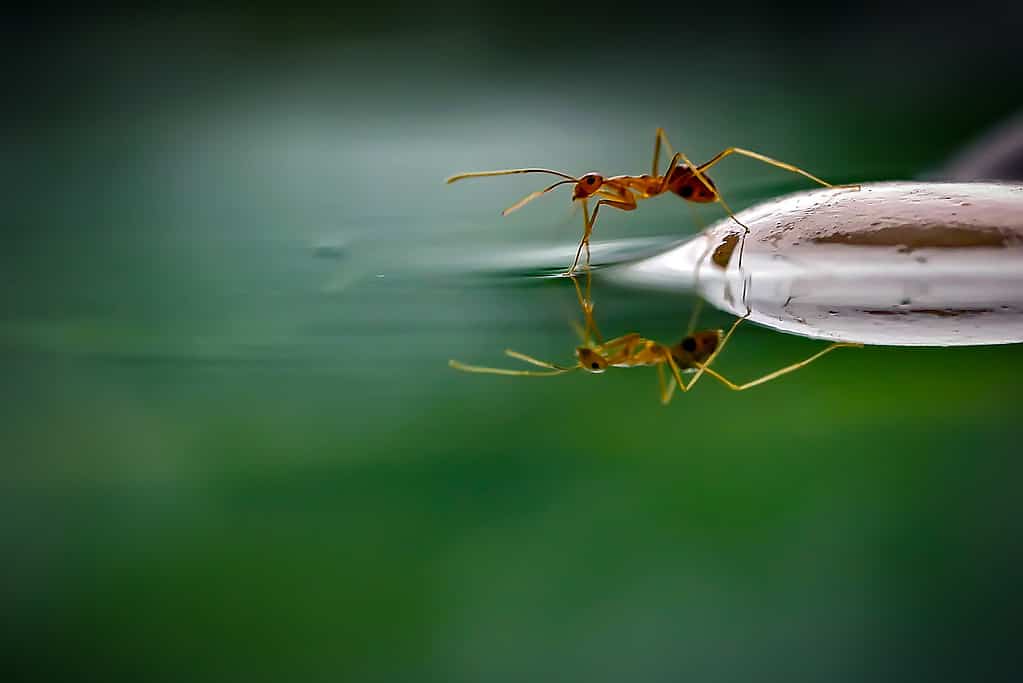
©teguh santosa kedua/Shutterstock.com
Ants, like all living creatures, require water to survive. They need water not only for hydration but also for maintaining the humidity levels in their nests. In your home, ants can find sources of water in a variety of places. Therefore, it is essential to be aware of these potential water sources to prevent infestations.
One common source of water for ants in homes is leaky plumbing. Even small drips from pipes, faucets, or appliances can provide enough moisture to attract ants. Ants may also be attracted to condensation on windows, air conditioning units, or refrigerator coils. If you have pets, their water bowls can be an attractive water source for ants. Make sure to clean up any spilled water promptly and keep the area around the bowls dry. Overwatering houseplants can create excess moisture in the soil, which can attract ants. Be mindful of the watering needs of your plants and avoid overwatering. Ants are often found in kitchens and bathrooms because these areas have water sources like sinks, dishwashers, and showers. Even small water spills can attract ants.
Prevention
To remove potential water sources and avoid ant infestations:
- Regularly check and repair any plumbing leaks, including faucets, pipes, and appliances. This will eliminate a significant source of moisture for ants.
- Wipe down countertops, sinks, and other surfaces to remove water droplets and food residue promptly. This will make your kitchen and bathroom less attractive to ants.
- If you have pets, be vigilant about cleaning up around their water bowls and food dishes. Make sure these areas are dry and clean.
- Avoid overwatering your houseplants. Ensure proper drainage, and allow the top layer of soil to dry out between waterings.
- Seal any cracks, gaps, or openings around doors, windows, and walls to prevent ants from entering your home in the first place.
- Regularly clean and sanitize your kitchen and bathroom areas to eliminate any traces of moisture that may attract ants. By eliminating sources of water and maintaining a clean and dry environment in your home, you can reduce the likelihood of ant infestations and make your space less inviting to these pests.
The 7 Most Common Causes of an Ant Infestation in Your House: Scents and Odors
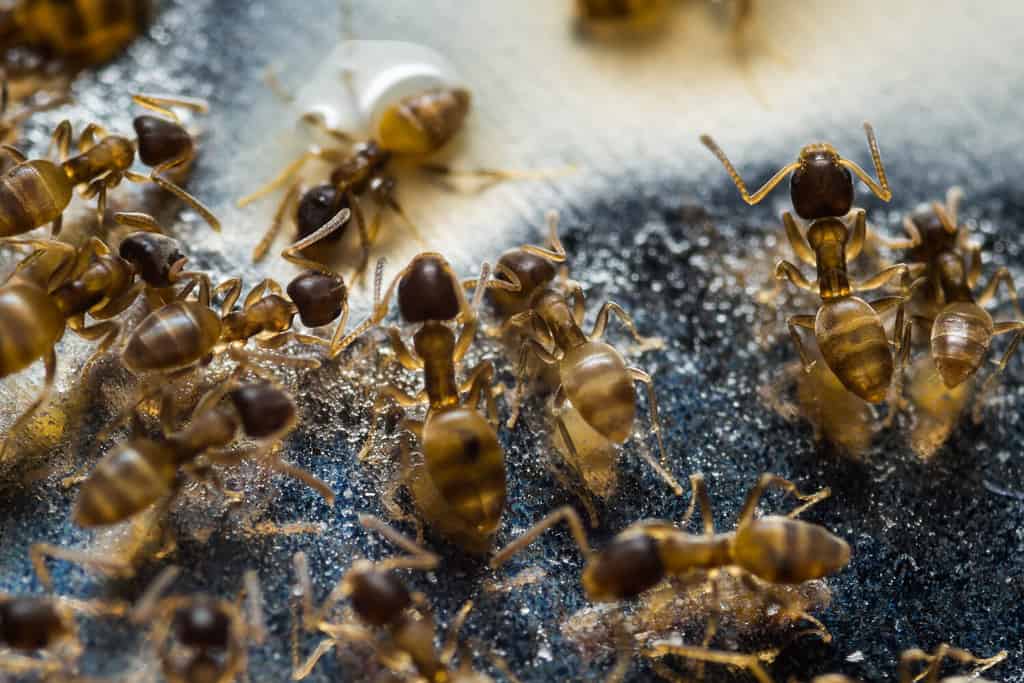
©Mathisa/Shutterstock.com
Ants are highly sensitive to scents and odors, including both natural and artificial ones. Their ability to detect and follow chemical cues is crucial for various aspects of their behavior, such as foraging for food, communicating within the colony, and marking pathways. Ants are constantly searching for food, and they are highly attracted to the scents of edible substances. They can detect the pheromones released by other ants to locate food sources. Even minute traces of food odors, such as crumbs or spilled liquids, can lead ants to forage in your home. Ants use chemical signals in the form of pheromones to communicate with each other.
When a scout ant finds a food source, it leaves a pheromone trail that guides other ants to the location. This chemical communication helps the colony efficiently gather resources. Food scents and odors are attractive to ants, and not only natural ones! Ants can also be attracted to artificial scents and odors that resemble or mimic food sources. Sweet-smelling cleaning products, perfumes, or scented candles may confuse ants and draw them in, thinking they are a potential food source.
The 7 Most Common Causes of an Ant Infestation in Your House: Warmth and Shelter
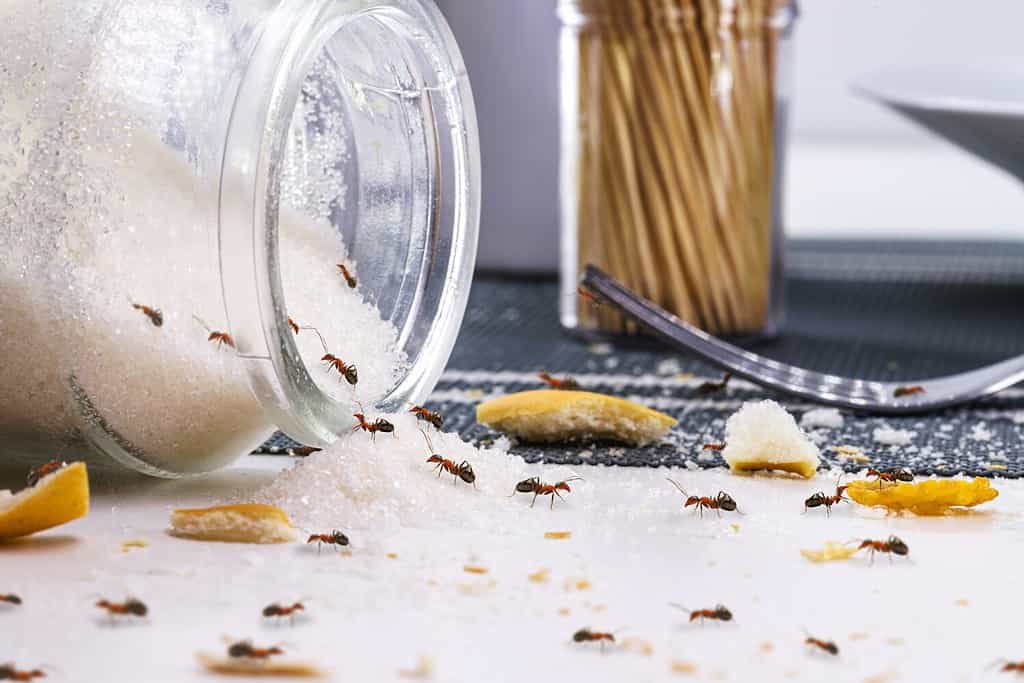
©RHJPhtotos/Shutterstock.com
Ants have specific needs for warmth and shelter, and these needs can be catalysts for driving them indoors, especially during certain seasons or environmental conditions.
During extreme weather conditions, such as hot summers or cold winters, ants may seek shelter indoors to escape unfavorable temperatures. Ants have numerous natural predators, including birds, insects, and small mammals. Seeking shelter indoors can provide them with protection from these threats.
Ant colonies often grow in size, and when they become overcrowded, some ants, including reproductive individuals, may venture out to establish new colonies. These exploratory ants may enter buildings in search of suitable nesting sites. In areas prone to drought or flooding, ants may move indoors to find stable, dry, and temperature-controlled environments that offer better survival conditions.
The 7 Most Common Causes of an Ant Infestation in Your House: Nesting Sites
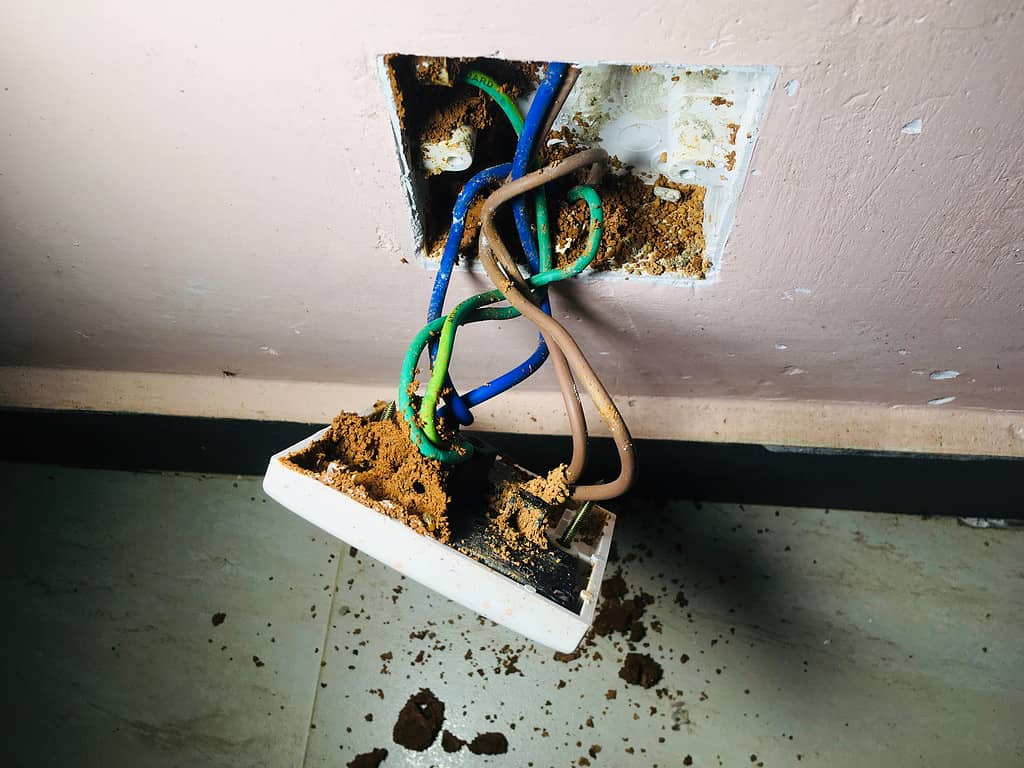
©OMfotovideocontent/Shutterstock.com
By being vigilant about maintaining a clean environment and minimizing the presence of scents and odors that might attract ants, you can reduce the likelihood of ant infestations in your home.
Ants can establish nests in various locations within homes, and their choice of nesting sites can depend on the ant species and environmental conditions. Ants can build nests in wall voids, particularly in spaces where insulation or wiring provides a suitable nesting material. They may enter through cracks or gaps in the walls. Kitchen and bathroom cabinets are common nesting sites for ants, especially if they find access to food and moisture nearby. Ants can nest under appliances like dishwashers, ovens, and refrigerators where food particles and moisture may accumulate.
Gaps and openings along baseboards and trim can provide concealed spaces for ants to establish nests. Attics and crawlspaces can be attractive nesting sites for ants, especially during extreme weather conditions when ants seek temperature-controlled environments. Ants may build nests in the soil of potted plants, particularly if the soil remains consistently moist. In homes with hardwood or tile flooring, ants can find openings or gaps between floorboards to establish nests. Ants can enter electrical outlets and build nests in the wall cavities behind them.
The 7 Most Common Causes of an Ant Infestation in Your House: Other Insects
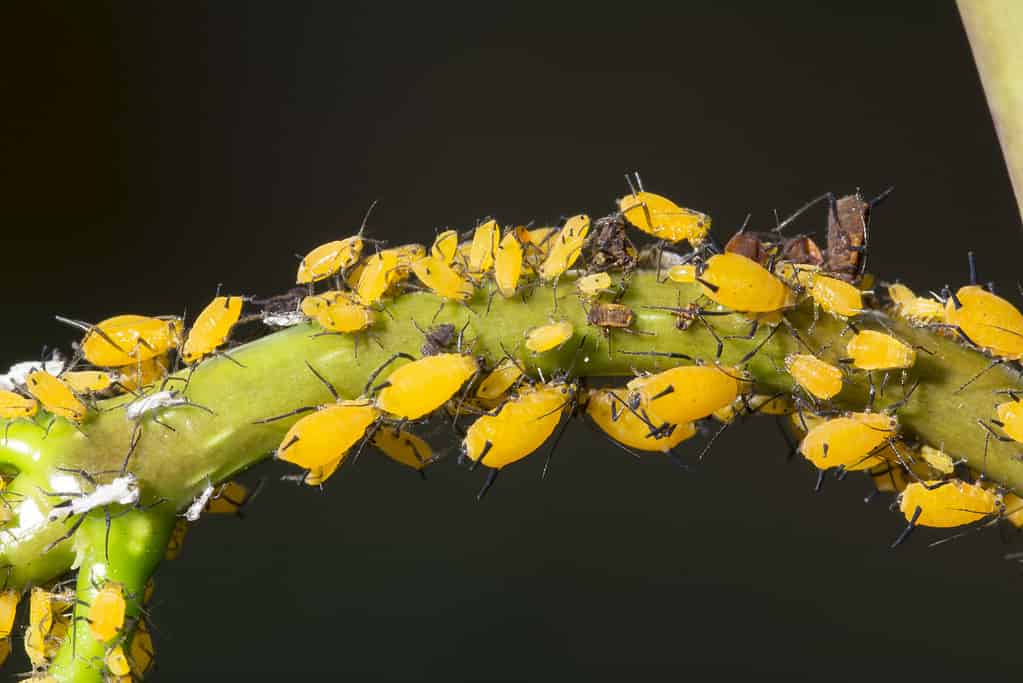
©iStock.com/Wirestock
The presence of other insects can provide a reason for ants to invade a home, and this phenomenon is often related to the ants’ foraging behavior and their mutualistic relationships with certain insects.
Some ant species have mutualistic relationships with aphids (Aphidoidea) and scale (Coccoidea). These tiny insects feed on plant sap and excrete a sugary substance known as honeydew. Ants are attracted to honeydew as a food source. In exchange for honeydew, ants protect aphids and scale insects from predators and help them move to new feeding locations. If you have plants with aphid or scale insect infestations near your home, ants may follow the scent of honeydew and enter your house in search of this sugary reward.
Secondary Infestations
Certain ant species, such as the Argentine ant, are known to forage for protein-based foods. They may be attracted to homes that have caterpillar infestations or the presence of insect larvae. Ants may enter homes to capture and transport these insects back to their nests as a source of food for the colony.
Ants are scavengers and are drawn to dead insects and other organic matter. If you have other insects that have died inside your home, ants may be attracted to the scent of decomposition and enter your house to scavenge. Ants are known to raid the nests of other insects, such as termites and certain species of bees and wasps, to steal their eggs, larvae, and pupae as a food source. If you have these insects nesting in or near your home, it can attract ants looking for a meal.
In some cases, the presence of other insects may create competition for limited resources, which can drive ants to seek alternative food sources, including the food in your kitchen.
To reduce the likelihood of ant invasions related to other insects, it’s important to address the underlying insect problems. This may involve pest control measures to manage aphids, scale insects, caterpillars, or other insects in your garden or around your home. Sealing entry points, keeping your home clean, and properly storing food can help deter ants from entering your home.
The 7 Most Common Causes of an Ant Infestation in Your House: Previous Infestations
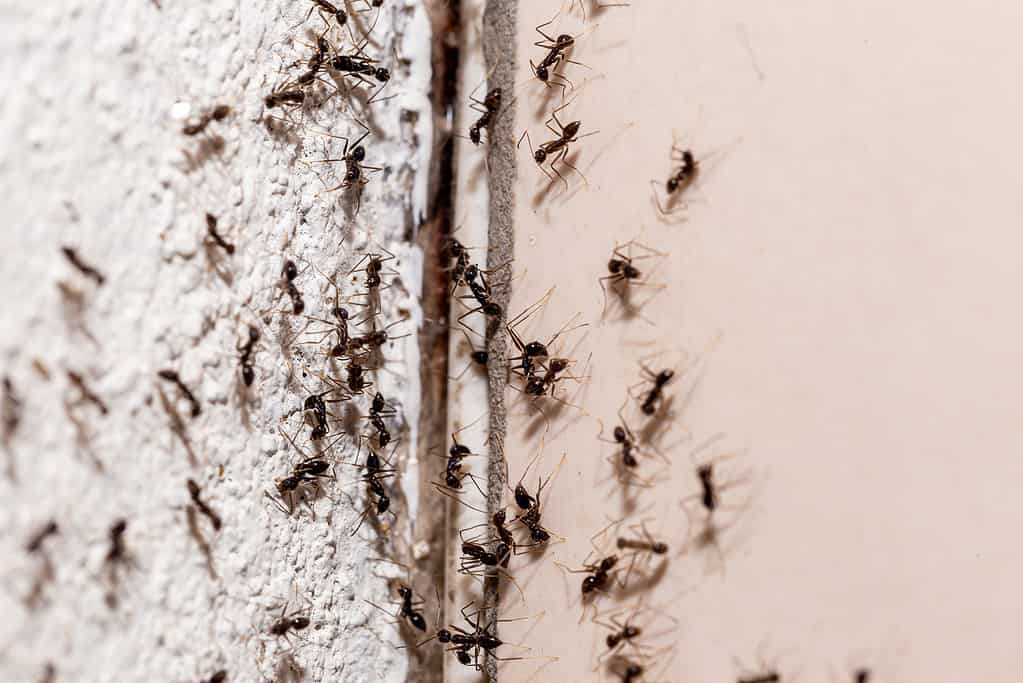
©RHJ/iStock via Getty Images
Previous ant infestations can contribute to the likelihood of new infestations for several reasons.
Ants leave behind chemical trails (pheromones) that guide other ants to food sources and nesting sites. When an ant infestation has occurred in the past, these scent trails can persist for some time. Even if you successfully eliminate the initial infestation, the lingering pheromones can continue to attract ants from the same colony or nearby colonies to the same location.
Ants often establish nests within walls, under floors, or in other hidden areas of a building. If you don’t completely eliminate the nesting site during the initial treatment, ants may return to rebuild their colony.
In some cases, not all members of an ant colony are affected by pest control measures. The queen, who is often deep within the nest, may survive, allowing the colony to eventually rebound and send out new foragers to search for food, potentially leading to a new infestation. Even after you’ve addressed the initial infestation, residual food crumbs, spills, or traces of ant-attractive substances may remain in your home. These remnants can continue to lure ants into your living space.
Some ant species have seasonal patterns of activity, becoming more active during certain times of the year. If you’ve had an ant infestation in the past, it’s possible that the same species may return during their peak activity season.
Take Precautions!
Locate and eliminate ant nests, if possible. This may involve treating nesting areas with appropriate pesticides or sealing access points to prevent reentry. Remove food sources and clean all surfaces to eliminate any pheromone trails and remnants that could attract ants. Seal cracks, gaps, and openings in walls, floors, and foundations to prevent ants from entering your home. Practice good hygiene and food storage habits to reduce the chances of new ant infestations. Regularly inspect and clean your home to minimize the attractiveness of your living space to ants. If the infestation is severe or persistent, consider consulting with a pest control professional who can accurately identify the ant species and implement targeted control measures.









